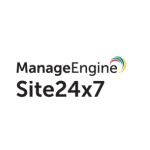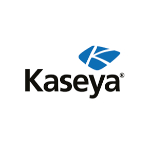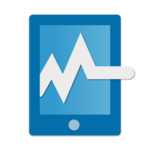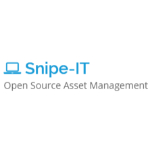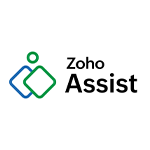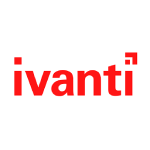List of Best IT Management Software
Showing 10 of 94 products
ManageEngine Remote Access Plus
Software by Zoho Corporation Pvt. Ltd.
ManageEngine Remote Access Plus is a remote desktop solution designed for IT support teams and system administrators. This software streamlines the troubleshooting process by allowing users to troubleshoot remote computers from a centralized location...Read ManageEngine Remote Access Plus Reviews
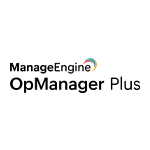
ManageEngine OpManager Plus
Achieve full-stack observability and reduce IT complexity
OpManager Plus is a comprehensive solution for IT infrastructure management, with the ability to monitor networks, servers, IPs, and switch ports. It enables efficient management of bandwidth, configurations, firewall rules, logs, and policies, all...Read ManageEngine OpManager Plus Reviews
ManageEngine Site24x7 is a SaaS-based, AI-powered observability platform for DevOps and IT operations. The cloud-based platform’s broad capabilities help predict, analyze, and troubleshoot problems with end-user experience, applications, microservi...Read ManageEngine Site24x7 Reviews
Atera is a software designed for modern businesses. With its intuitive interface and powerful features, Atera simplifies IT management and boosts productivity. Its innovative technology streamlines tasks, improves response time, and reduces downtime...Read Atera Reviews
Kaseya EMM is a mobile device management solution designed to streamline and optimize the management of mobile devices in the workplace. With Kaseya EMM, businesses can easily secure, monitor, and control a diverse range of devices, ensuring a seamle...Read Kaseya EMM Reviews
Pulseway is a remote monitoring and management solution designed to simplify IT management for businesses of all sizes. With its user-friendly interface and real-time notifications, managing systems and networks has never been easier. Stay on top of...Read Pulseway Reviews
Spiceworks is a brilliant and innovative software designed to make IT management easier and more efficient for businesses of all sizes. With a user-friendly interface and powerful features, Spiceworks streamlines daily tasks and assists in keeping te...Read Spiceworks Reviews
Snipe IT is a asset management software designed to simplify the tracking and organization of company assets. With its intuitive interface is a features, Snipe IT revolutionizes the way businesses manage their valuable resources. Say goodbye to tedio...Read Snipe IT Reviews
Zoho Assist is a reliable cloud-based remote desktop solution with comprehensive secure remote access features. Enhance your customer support experience and explore the one-stop solution for all your remote support needs with our efficient remote acc...Read Zoho Assist Reviews
Ivanti is a leading software company known for providing innovative solutions to streamline and simplify IT operations. With a commitment to enhancing productivity and reducing costs, Ivanti offers a range of products that address critical business n...Read Ivanti Neurons Reviews
- What Is IT Management Software?
- Top Reasons Why Businesses Need IT Management Software?
- What Are the Top Key Features of IT Management Software?
- What Are the Top Benefits of IT Management Software?
- What Are the Steps to Choose the Right IT Management Software?
- What Are the Types of IT Management Software for Different Industries?
- What Are the Technology Trends for Best IT Management Software?
- What are the deployment options for IT management software?
What Is IT Management Software?
IT management software, alternatively referred to as enterprise resource management (ERM) software, is a software tool utilized to strategize, organize, and oversee the day-to-day activities within organizations. This program has the potential to assist company leaders in decision-making, resource management, and process optimization.
IT management software facilitates the automation of several facets of business administration through the provision of a platform for managers to strategize initiatives, enhance communication, oversee customer connections, monitor and evaluate performance, as well as address client feedback and inquiries.
Moreover, this tool can be utilized for data analysis, prediction of future trends, and evaluation of performance indicators. Furthermore, these systems facilitate the ability of individuals within an organization to gain access to pertinent information, exchange papers, monitor advancements, and engage in cooperative efforts for the purpose of project completion.
The features of IT management software encompass user dashboards, calendars, task lists, and statistics, which serve to facilitate informed decision-making by managers. In general, it is a crucial instrument for optimizing corporate operations and remaining informed about market developments.
The utilization of software IT management aids managers in maintaining optimal operational performance and effectiveness within their corporate operations. The utilization of IT management software is imperative in order to maintain competitiveness within a corporate environment that is progressively influenced by technology.
Top Reasons Why Businesses Need IT Management Software?
1. Automates tedious processes: IT management software for small business is designed to automate many labor-intensive procedures, including but not limited to patching, security compliance chores, and account provisioning.
2. Network monitoring: The utilization of it enables the monitoring of essential network devices, including routers, switches, and firewalls.
3. Asset management: It is a valuable tool that facilitates the monitoring and administration of IT assets, encompassing hardware, software, and licenses.
4. Inventory management: The utilization of software IT management facilitates the monitoring and control of inventories pertaining to hardware, software, and peripheral devices.
5. Security policy enforcement: The utilization of it facilitates the adherence of firms to security rules and audit frameworks.
6. User management: The utilization of top IT management software enables the regulation of system and resource accessibility, allocation of users into designated groups, and administration of user accounts.
7. Automates backups: IT management systems can automate and schedule periodic backups of data, thereby guaranteeing the preservation of data.
8. Improves user experience: It enables the establishment of individualized configurations for each user, facilitating efficient and convenient access to their respective resources.
9. Improves system performance: The utilization of software IT management facilitates the enhancement of system performance through the assurance of up-to-date software and hardware configurations.
10. Prioritization of tasks: The utilization of this facilitates the process of work prioritizing and enables IT personnel to effectively allocate resources.
11. Optimizing system resources: The utilization of it enables the identification and exploitation of system resources, including processors and memory, with the objective of optimizing operational efficiency.
12. Automate system maintenance: The utilization of IT management software for small businesses enables the automation of regular maintenance procedures, including disk defragmentation and virus checks.
13. Automate updates and upgrades: The utilization of IT management software enables the scheduling of automated updates and upgrades, thereby ensuring the continuous maintenance of software and hardware to remain current.
14. Systems integration: The utilization of IT management software facilitates the seamless integration of diverse systems, encompassing telecom networks, databases, and data centers.
15. Enhances customer support: Information technology (IT) management software has the potential to enhance operational efficiency by facilitating faster reaction times, enhancing accuracy, and elevating customer support services.
What Are the Top Key Features of IT Management Software?
1. Asset Tracking: IT management software provides a full picture of both hardware and software assets, hence enhancing the visibility of an organization's IT infrastructure.
2. Automated Patching and Updates: The use of automated patching and updates in software IT management facilitates the installation of patches and updates according to a predetermined schedule. This feature plays a crucial role in maintaining system performance and enhancing security measures.
3. Access Controls: IT management systems offer access controls for sensitive data and systems, so guaranteeing that only individuals with proper authorization may gain entry to certain resources.
4. Monitoring & Reporting: The utilization of IT management software for small businesses enables the monitoring of system performance and the generation of periodic reports, hence furnishing administrative teams with timely and pertinent information.
5. Help Desk & Ticketing Management: The top IT management software offers a single platform for effectively handling customer service requests and various technical support concerns.
6. Security Analytics: The incorporation of artificial intelligence in IT management software companies facilitates the identification of potential security threats and concerns by detecting anomalies.
7. Cloud Administration: The utilization of IT management software facilitates the seamless deployment, configuration, and maintenance of cloud infrastructure resources, hence enhancing the efficiency of managing a hybrid cloud environment.
8. Migrations & Consolidation: The utilization of IT management software streamlines the procedure of amalgamating and transferring data across a dispersed infrastructure and various cloud service providers.
9. Service Orchestration: It enables IT administrators to effectively manage service requests through the utilization of clever automated processes.
10. Compliance Management: The utilization of this facilitates the maintenance of congruence between an organization's IT infrastructure and designated regulatory mandates.
What Are the Top Benefits of IT Management Software?
1. Improved Visibility and Control: The utilization of IT management systems facilitates the consolidation of control mechanisms, resulting in enhanced oversight of IT assets, processes, and tasks. This facilitates IT managers in expeditiously making well-informed decisions and mitigates the potential for operational disruptions arising from difficulties.
2. Decreased Operational Costs: The implementation of IT management software for small businesses facilitates the automation of intricate IT operations, resulting in a decrease in operational expenditures and the ability for teams to allocate their efforts towards higher-priority assignments.
3. Improved Security: The utilization of IT management system software enables the establishment and implementation of security policies, hence facilitating the enforcement of said policies and the provision of timely notifications to users regarding potential dangers. Consequently, this software contributes to the augmentation of network security measures.
4. Automation of Repetitive Tasks: The utilization of information technology (IT) management software has the capacity to automate operations that are monotonous and repetitive, so allowing teams to allocate their time more effectively.
5. Streamlined Compliance: The utilization of IT management software has the capability to automate the process of generating compliance reports, resulting in a reduction of the time required for their generation. This automation ensures that enterprises remain current with the most recent regulatory requirements.
6. Managed Change and Configuration Processes: The utilization of top IT management software facilitates the optimization of modification and configuration procedures, hence ensuring the adoption of the most efficient system configuration.
7. Enhanced Collaboration: The utilization of IT management software facilitates improved collaboration functionalities, hence enabling users to engage in more seamless collaboration processes and expedite task completion.
8. Improved Business Continuity: The utilization of IT management software companies facilitates the preservation of business continuity through enhanced monitoring capabilities and expedited response mechanisms for IT teams in addressing possible concerns.
What Are the Steps to Choose the Right IT Management Software?
1. Establish and ascertain the IT management objectives of your firm. The identification and prioritization of objectives that an IT management system must fulfill is essential. This will aid in the identification of the requisite features and capabilities that the optimal system should possess.
2. The task at hand involves researching several solutions available for software IT management. Acquire pertinent data pertaining to the array of best IT management software packages by consulting industry magazines, websites, and professional acquaintances. It is advisable to take into account both on-premise and cloud-based software solutions.
3. Initiate communication with vendors specializing in IT management software. It is advisable to initiate communication with multiple vendors in order to obtain detailed information regarding the features and capabilities of the software. This will enable a comprehensive understanding of how the software aligns with the aims and objectives of the organization.
4. Conduct a comparative analysis of the features and capabilities inherent in each software alternative. This task involves doing a comparative analysis of the features and capabilities of several software applications, followed by the creation of a comparison chart to facilitate the evaluation of each alternative.
5. Evaluate the top IT management software. If feasible, establish experimental trials for each software program to assess their performance against predetermined criteria and ascertain the extent to which they align with your objectives.
6. Engage in the process of decision-making. After conducting a thorough evaluation and examination of the various software packages, it is imperative to reach a conclusion on the most suitable IT management software for your firm.
What Are the Types of IT Management Software for Different Industries?
1. Business Process Management (BPM) Software: The utilization of business process management (BPM) software facilitates the automation and optimization of business operations across many industries.
The implementation of this solution has the potential to enhance workflow efficiency, streamline system integration, monitor project progress, and provide additional functionalities.
2. Business Intelligence (BI) Software: Business intelligence (BI) software facilitates the systematic acquisition, storage, interpretation, analysis, and dissemination of data inside businesses. It possesses the capacity to provide valuable insights for decision-making processes within sectors that necessitate the management and analysis of substantial volumes of data.
3. Cloud Management Software: Cloud management software is utilized to effectively manage cloud-based services in many businesses. This technology aids organizations in effectively monitoring and managing resource allocation, utilization, and performance.
4. Inventory Management Software: Inventory management software plays a crucial role in facilitating the maintenance of precise inventory data across various industries inside businesses. This tool can monitor and manage stock numbers, regulate stock levels, establish cost structures, and evaluate patterns in sales.
5. Enterprise Resource Planning (ERP) Software: Enterprise resource planning (ERP) software is employed to consolidate disparate departments within an organization and facilitate the integration of corporate operations across diverse industries. The utilization of this technology can facilitate project and data management, asset tracking, and customer management.
6. Marketing Automation Software: Marketing automation software is a tool that facilitates the automation of marketing activities in many sectors. This tool can assist the process of consumer segmentation, enable the creation of targeted email campaigns, monitor and evaluate the return on investment, and perform additional functions.
What Are the Technology Trends for Best IT Management Software?
1. The current technology developments in IT management system encompass several characteristics such as automation, deployment of cloud computing, integration of analytics, creation and deployment of mobile applications, enhanced security measures, and improved user experience.
2. Automation capabilities enable information technology (IT) departments to enhance system performance and maximize resource usage through the automation of configuration, operational, and maintenance chores.
3. The adoption of cloud computing facilitates the execution of software applications by IT departments, eliminating the need for physical hardware installation and storage concerns. The utilization of integrated analytics enables IT teams to expeditiously assess system performance and enhance operations to achieve heightened efficiency.
4. The significance of developing and delivering mobile applications is growing in importance for IT teams due to the rising utilization of mobile devices by employees for work-related activities.
5. Ensuring security is of utmost importance to IT teams, and the most effective IT management software has sophisticated security mechanisms to safeguard data.
6. Ultimately, the utilization of superior IT management software facilitates an enhanced user experience through the provision of secure platforms that enable users to conveniently access data, applications, and resources.
What are the deployment options for IT management software?
Various deployment methods are available for IT management software, including cloud-hosting, on-premises, or a combination of both known as a hybrid deployment model.
1. Cloud hosting refers to the practice of hosting software and services in an off-site location, often facilitated by a third-party provider. This alternative offers advantages such as the flexibility to scale, enhanced security measures, and potential cost reductions, as it eliminates the need for customers to invest in hardware for software hosting purposes.
2. The deployment of software and services in on-premises environments involves the direct installation and implementation of these components into the customer's system.
One notable benefit is the attainment of comprehensive control, whereby the customer possesses the capability to oversee and regulate the security measures and accessibility of both the program and data during the entire process.
Furthermore, expedited access to customer IT resources can be facilitated, and the deployment of on-premise solutions is frequently characterized by enhanced cost-efficiency.
3. Ultimately, a hybrid solution amalgamates the advantages of cloud hosting and on-premises deployment, resulting in a comprehensive approach. Customers are afforded the advantages of cloud computing while also enjoying a higher degree of individual control.
